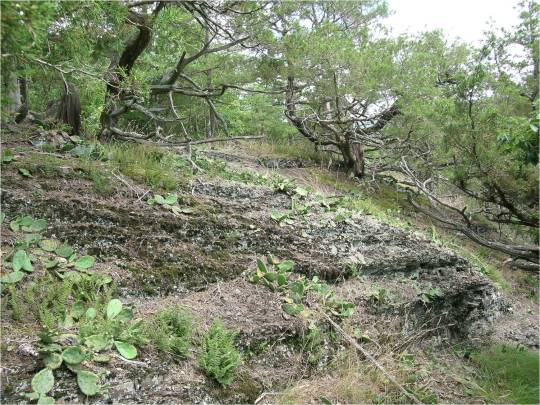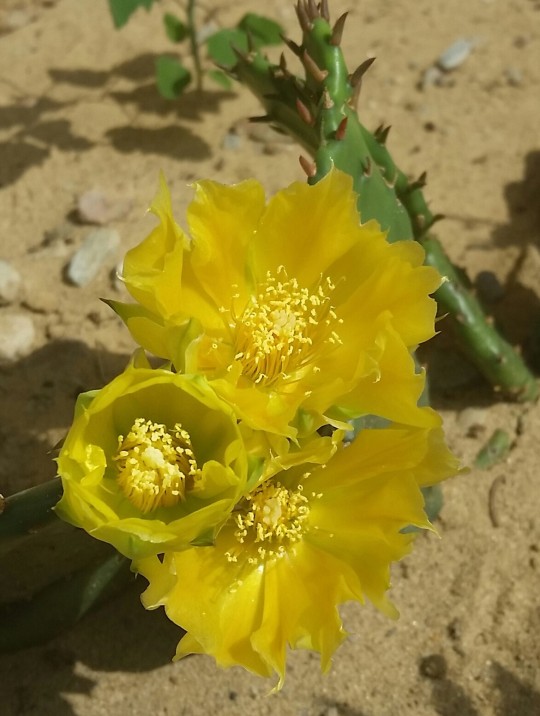By John Wenzel
No one thinks of deserts in Pennsylvania, but we have one habitat that includes many plants typical of the western deserts. The “shale barrens” have formed over millions of years as the eroding crests of the Appalachian ridges open up areas where rock slides or exposed shale deposits create an area of very little soil that gets hot in the sun and that holds no water.

Plants such as the red cedar, barrens stonecrop, hen-and-chicks, or even prickly pear cactus thrive in these microdeserts, mostly on south-facing hillsides. These resemble more closely communities in west Texas than the eastern deciduous forest around them. Yet, unlike the West, there may be ferns alongside the cactuses, taking advantage of the rain.

How do cactuses survive our winter? Because they can tolerate being dried out, they dump their water when it gets cold and collapse like deflated balloons. With little water in them, they do not develop ice crystals internally, and so do not freeze! At Powdermill Nature Reserve, we maintain a small dry garden to show these unusual species to visitors.
John Wenzel is the Director at Powdermill Nature Reserve, Carnegie Museum of Natural History’s environmental research center. Museum employees are encouraged to blog about their unique experiences and knowledge gained from working at the museum.
